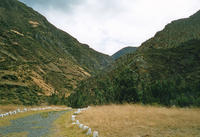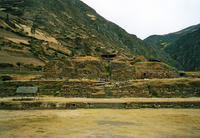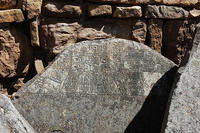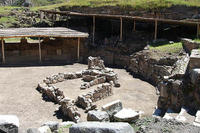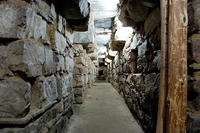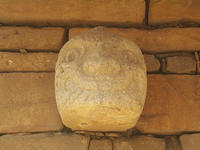You are in: South America -> Peru -> Chavin (Archaeologic... , and traditional search or Image Gallery will yield results of this site only
Chavin (Archaeological Site)
| Site number: | 330 |
|
| Type of site: | Cultural | |
| Date: | 1500-300 B.C. | |
| Date of Inscription: | 1985 | |
| Location: | South America, Peru, Ancash Department, Huari Province, Chavin District | |
Up to 75 images are shown here. Click on each for more details or on Image Gallery for more images.
| Description: | The culture that developed between 1500 and 300 B.C. in this high valley of the Peruvian Andes got its name from the archaeological site of Chavin. Once a place of worship, this is among the earliest and best-known pre-Columbian sites. With its complex of terraces and squares, enclosed by dressed stone structures, and the principally zoomorphic ornamentation – the site’s appearance is striking. --WHMNet paraphrase from the description at WHC Site, where additional information is available. | |
| Chavín de Huantar is an archaeological site containing ruins and artifacts originally constructed by the Chavin, a pre-Inca culture, around 900 B.C. The site is located 250 kilometers north of Lima, Peru at an elevation of 3150 meters, between the Andean mountain ranges of the Cordillera Negra and the Cordillera Blanca. Chavín de Huantar has been designated a UNESCO World Heritage Site. Some of the Chavín reliefs from this archaeological site are on display in the Museo de la Nación in Lima. Chavin de Huantar was initially built around 900 B.C. While the fairly large population was based on an agricultural economy, the city's location at the head waters of the Marañon River, between the coast and the jungle, made it an ideal location for the dissemination and collection of both ideas and material goods. Findings at Chavin de Huantar indicate that social instability and upheaval began to occur between 500 and 300 B.C., at the same time that the larger Chavin civilization began to decline. Large ceremonial sites were abandoned, some unfinished, and were replaced by villages and agricultural land. At Chavin de Huantar, no later than 500 B.C., a small village replaced the Circular Plaza. The plaza was occupied by a succession of groups, and building stones and stone carvings were salvaged for use in house walls. Multiple occupation floors indicate the village was continuously occupied through the 1940’s. --Wikipedia. Text is available under the Creative Commons Attribution-ShareAlike License. | ||
| Source: | http://whc.unesco.org/en/list/330 | |
| Reference: | 1. UNESCO World Heritage Center, Site Page. | |




